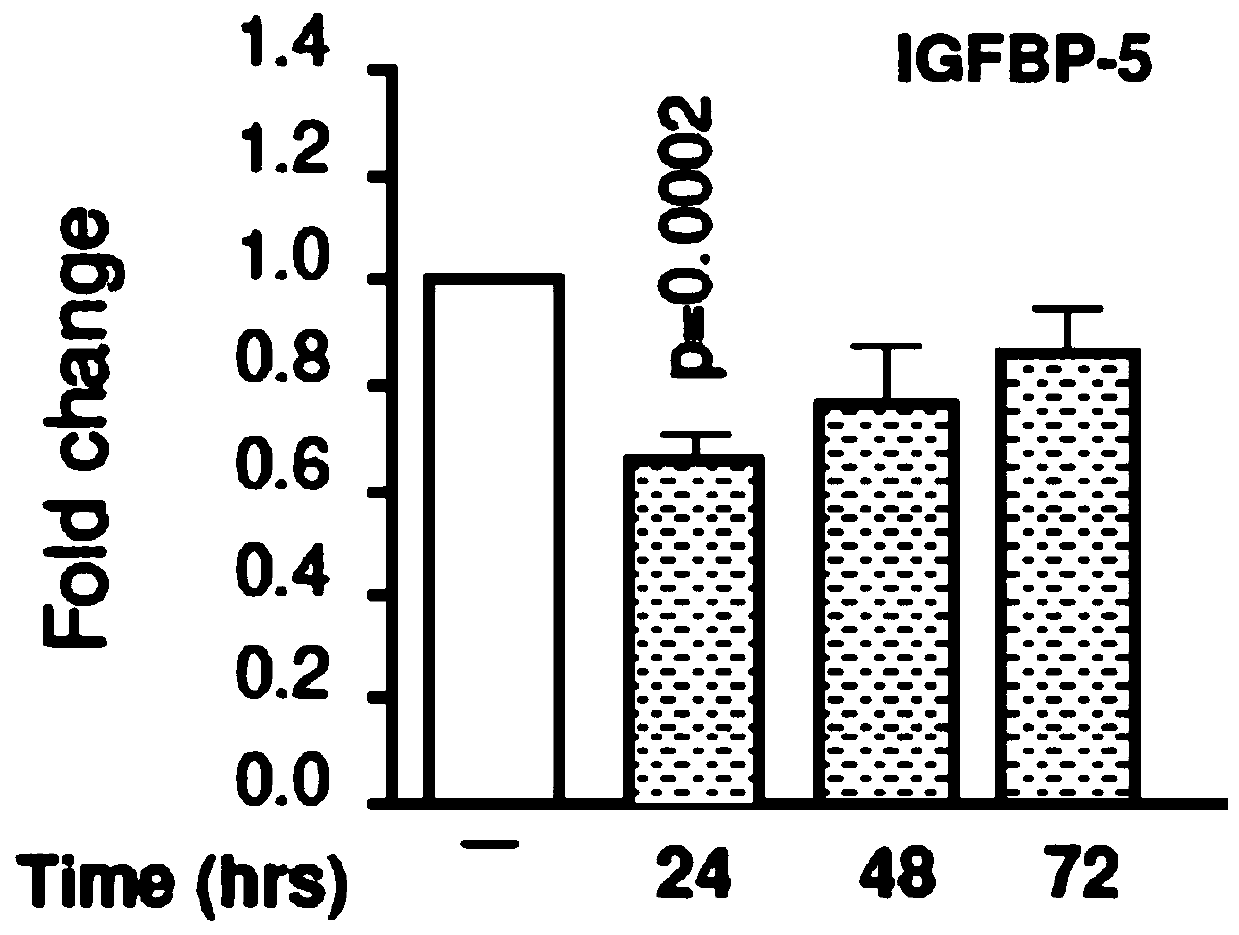Preparation method of exosome-containing cartilage repair material
A cartilage repair and exosome technology, which is applied in the preparation of cartilage repair materials and in the field of cartilage repair materials, can solve the problems of difficult preservation, no repair of blood vessels, and easy inactivation of growth factors, etc., to achieve easy access, good guidance for tissue formation, The effect of high bionicity
- Summary
- Abstract
- Description
- Claims
- Application Information
AI Technical Summary
Problems solved by technology
Method used
Image
Examples
Embodiment 1
[0033] (1) Preparation steps of exosomes:
[0034] Step 1: Construct a plasmid for overexpression of miRNA140 by means of genetic engineering.
[0035] Based on the pCDH-CMV-MCS-EF1-copGFP lentiviral expression vector, the miRNA-140 gene was integrated to obtain the miRNA-140 overexpression lentiviral vector pCDH-CMV-MCS-EF1-copGFP-140.
[0036] Step 2: Pack and obtain lentivirus, and transfect 293T.
[0037] Use lentiviral packaging plasmids pSPAX2 and pMD2.G to package pCDH-CMV-MCS-EF1-copGFP-140, transfect 293T cells, and enrich high-titer virus liquid.
[0038] Step 3: infect bone marrow mesenchymal stem cells.
[0039] The packaged virus was used to infect bone marrow mesenchymal stem cells, and bone marrow mesenchymal stem cells hBMMSCs-140 overexpressing miRNA-140 were obtained.
[0040] Step 4: Cultivate hBMMSC-140, isolate exosome Exso-140 overexpressing miRNA-140 from the culture medium, add a preservation solution containing sodium gluconate and inorganic salts, ...
Embodiment 2
[0045] (1) Preparation steps of exosomes
[0046] Step 1: Construct a plasmid for overexpression of miRNA140 by means of genetic engineering.
[0047] Based on the pCDH-EF1-Luc2-T2A-tdTomato lentiviral expression vector, the miRNA-140 gene was integrated to obtain the miRNA-140 overexpression lentiviral vector pCDH-EF1-Luc2-T2A-tdTomato-140.
[0048] Step 2: Pack and obtain lentivirus, and transfect 293T.
[0049] Use lentiviral packaging plasmids pSPAX2 and pMD2.G to package pCDH-EF1-Luc2-T2A-tdTomato-140, transfect 293T cells, and enrich high-titer virus liquid.
[0050] Step 3: infect bone marrow mesenchymal stem cells.
[0051] The packaged virus was used to infect bone marrow mesenchymal stem cells, and bone marrow mesenchymal stem cells hBMMSCs-140 overexpressing miRNA-140 were obtained.
[0052] Step 4: Cultivate hBMMSC-140, isolate exosome Exso-140 overexpressing miRNA-140 from the culture medium, add a preservation solution containing sodium gluconate and inorganic...
Embodiment 3
[0057] Preparation steps of exosomes
[0058] Step 1: Construct a plasmid for overexpression of miRNA140 by means of genetic engineering.
[0059] Based on the pCDF1-MCS2-EF1-copGFP lentiviral expression vector, the miRNA-140 gene was integrated to obtain the miRNA-140 overexpression lentiviral vector pCDF1-MCS2-EF1-copGFP-140.
[0060] Step 2: Pack and obtain lentivirus, and transfect 293T.
[0061] Use lentiviral packaging plasmids pSPAX2 and pMD2.G to package pCDF1-MCS2-EF1-copGFP-140, transfect 293T cells, and enrich high-titer virus liquid.
[0062] Step 3: infect bone marrow mesenchymal stem cells.
[0063] The packaged virus was used to infect bone marrow mesenchymal stem cells, and bone marrow mesenchymal stem cells hBMMSCs-140 overexpressing miRNA-140 were obtained.
[0064] Step 4: Cultivate hBMMSC-140, isolate exosome Exso-140 overexpressing miRNA-140 from the culture medium, add a preservation solution containing sodium gluconate and inorganic salts, and store a...
PUM
 Login to View More
Login to View More Abstract
Description
Claims
Application Information
 Login to View More
Login to View More - R&D
- Intellectual Property
- Life Sciences
- Materials
- Tech Scout
- Unparalleled Data Quality
- Higher Quality Content
- 60% Fewer Hallucinations
Browse by: Latest US Patents, China's latest patents, Technical Efficacy Thesaurus, Application Domain, Technology Topic, Popular Technical Reports.
© 2025 PatSnap. All rights reserved.Legal|Privacy policy|Modern Slavery Act Transparency Statement|Sitemap|About US| Contact US: help@patsnap.com

